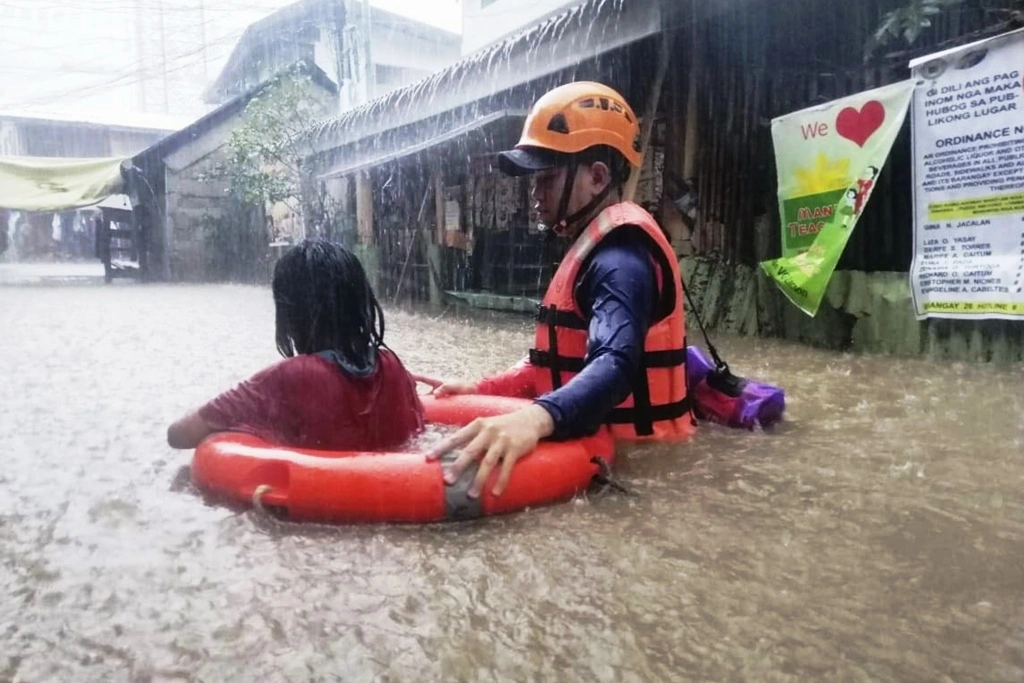Typhoon Rai slammed into the Philippines Thursday, causing thousands of people to flee their homes and beachfront resorts. A charity warned that coastal communities could be hit “like a freight train”.
The state weather forecaster said Rai carried maximum sustained winds of 195 kilometres (120 miles) an hour when it made landfall on the southern island of Siargao at 1:30 pm (0530 GMT).
The storm is the strongest to hit the disaster-prone nation this year.
Alberto Bocanegra is the head of the International Federation of Red Cross and Red Crescent Societies in the Philippines. He said that the monster storm will hit coastal communities like an oncoming freight train.
Typhoons are becoming more violent and unpredictable as a result of climate change.
In addition to widespread flooding and rain-induced landslides, the weather bureau warned of “very destructive” winds which could cause “heavy to very heavy damage to structures and vegetation”.
Read: Philippines Plans Reopening to Vaccinated Foreign Tourists
The storm charged across the Pacific Ocean, causing more than 90,000 people to seek refuge. Areas in the typhoon’s path were still evacuating.
Among the evacuees were domestic tourists visiting the country’s famous beaches and diving spots before Christmas.
Under Covid-19 restrictions, foreigners are still forbidden to enter the Philippines.
As people waited for the full intensity of the typhoon, tourists on Siargao captured video showing trees violently swaying.
Breaking: The Philippines to Finally Raise Age of Consent from 12 to 16-Year-old
In Dapa, families slept on the floor of a sports complex that had been converted into a temporary evacuation centre.
There have been scores of flights cancelled and dozens of ports temporarily closed as the weather bureau warned metre-high storm surges could cause “life-threatening flooding” in low-lying coastal areas.
The wind could damage houses made of light materials, according to weather forecaster Christopher Perez. He told a briefing to prepare for heavy rains and strong winds as well.
In the Philippines, cyclone Rai, also known as Odette, is hitting late in the tropical cyclone season, when most storms develop between July and October.
The country has been threatened with super typhoons since September when Chanthu grazed the northeastern tip of Luzon.






